1. Predictive Maintenance
AI algorithms analyze data from aircraft sensors to predict when parts might fail or require maintenance, reducing downtime and increasing safety by addressing issues before they become critical.
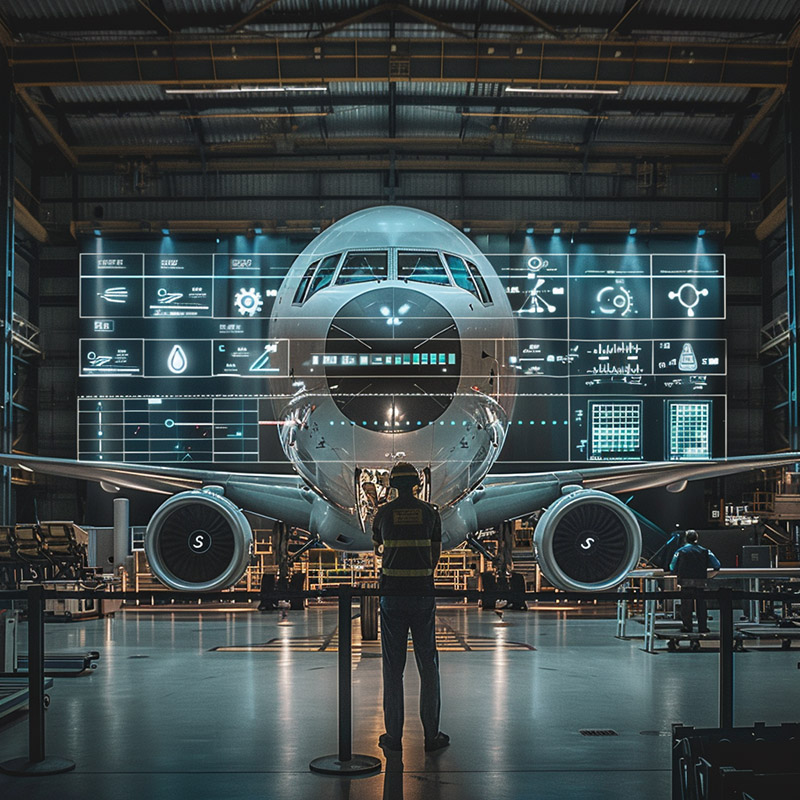
Maintenance Before AI
Maintenance schedules were based on predetermined intervals, leading to unnecessary checks or unexpected failures that could ground aircraft and disrupt schedules. This approach often resulted in higher operational costs and decreased safety margins.
Maintenance After AI
With AI-driven predictive maintenance, airlines can monitor the real-time health of aircraft components, predicting failures before they occur. This optimization reduces downtime and maintenance costs while enhancing safety, ensuring aircraft are serviced based on need rather than a fixed schedule.
2. Flight Optimization
AI optimizes flight paths in real-time, considering factors like weather, air traffic, and fuel consumption. This leads to more efficient routes, saving time and reducing fuel costs and emissions.
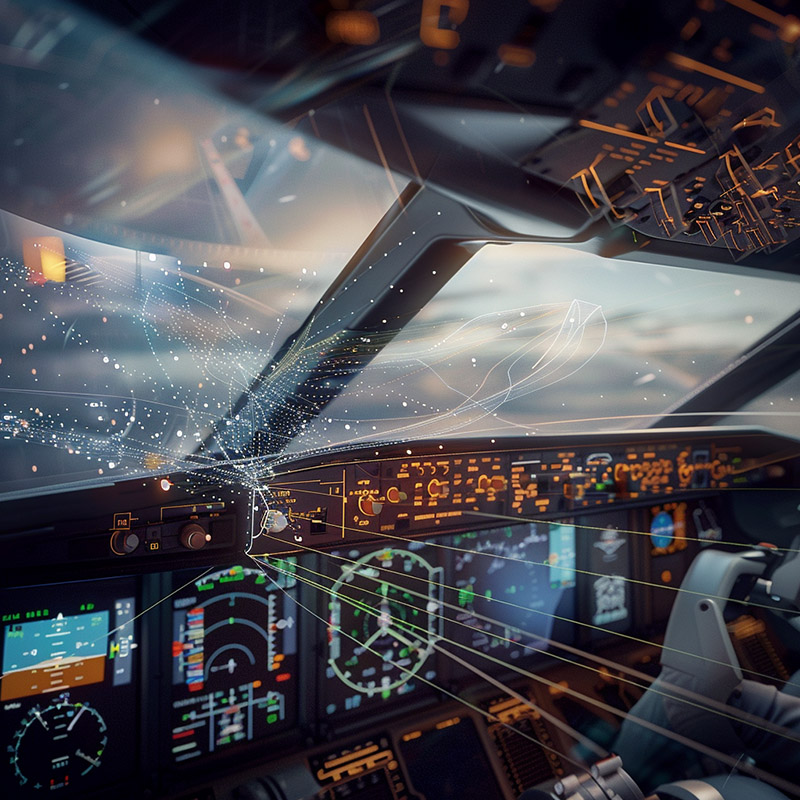
Optimization Before AI
Flight paths were planned using standard routes and manual adjustments for weather and traffic, which did not always result in the most efficient or fuel-effective trajectories, leading to increased fuel consumption and longer flight times.
Optimization After AI
AI optimizes flight routes in real-time, considering current weather conditions, air traffic, and fuel efficiency. This leads to shorter flight times, reduced fuel consumption, and lower emissions, benefiting both the environment and airline operations.
3. Automated Air Traffic Control
AI systems enhance air traffic management by processing vast amounts of data to optimize flight scheduling and routing, reducing congestion and delays while improving overall airspace efficiency.
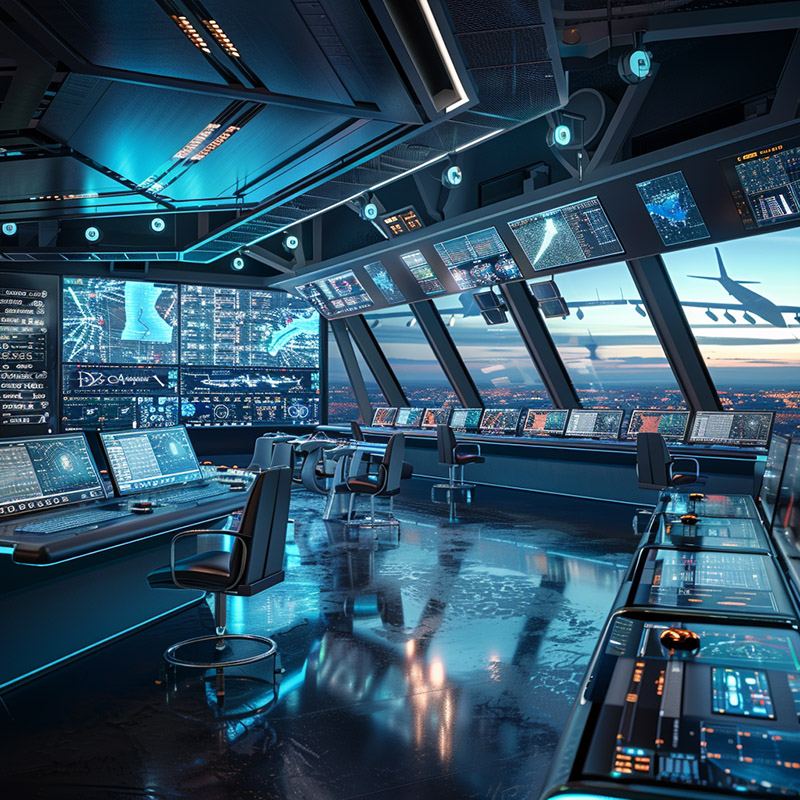
Air Traffic Control Before AI
Air traffic control relied heavily on human operators to manage flight paths and scheduling, limiting the capacity of airspace and sometimes leading to delays and congestion, especially in busy airspaces.
Air Traffic Control After AI
AI-enhanced air traffic control systems process vast amounts of data to optimize airspace usage and flight scheduling, reducing congestion and delays. This automation supports a smoother flow of air traffic, improving efficiency and safety across the aviation network.
4. Passenger Experience Personalization
AI tailors the travel experience by analyzing passenger data to offer personalized services, from in-flight entertainment to customized meal options, improving customer satisfaction.
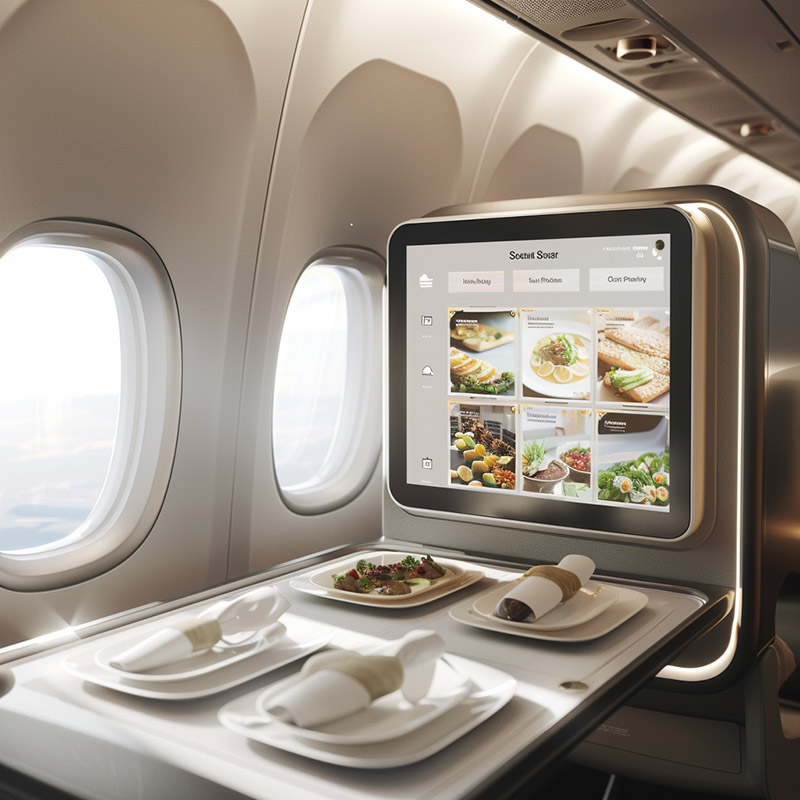
Passenger Experience Before AI
The passenger experience was generally one-size-fits-all, with limited customization of in-flight services or entertainment options, potentially leading to a less satisfying travel experience.
Passenger Experience After AI
AI enables airlines to offer a personalized travel experience, from tailored in-flight entertainment to customized service offerings, improving passenger satisfaction and loyalty by addressing individual preferences and needs.
5. Baggage Handling Automation
AI-driven systems improve baggage sorting and tracking, reducing the chances of lost luggage and speeding up the handling process, which enhances operational efficiency and passenger experience.
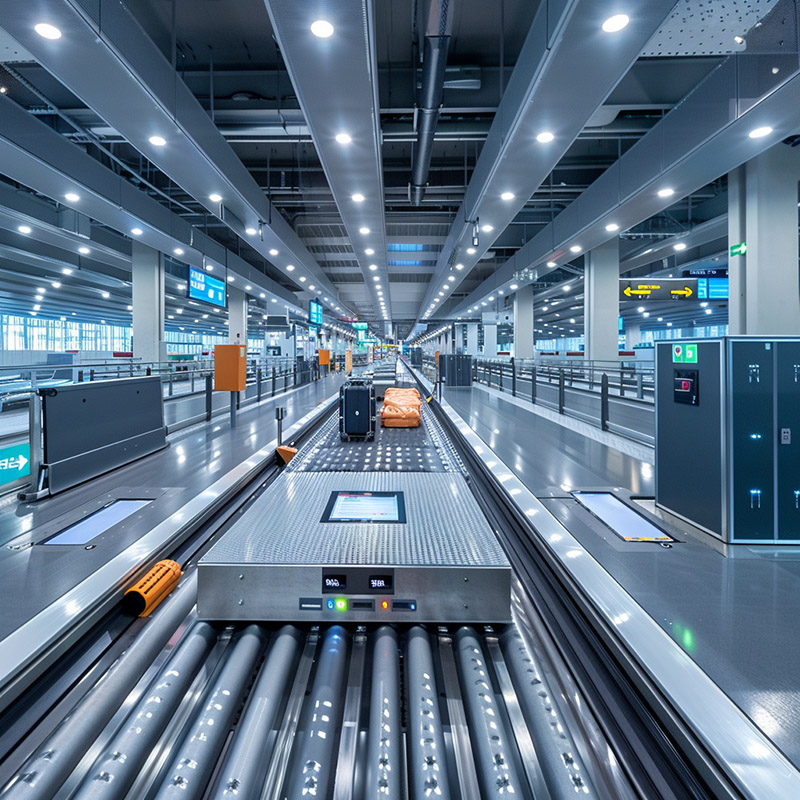
Baggage Handling Before AI
Manual baggage handling processes were prone to errors, resulting in misplaced or delayed luggage and a frustrating travel experience for passengers.
Baggage Handling After AI
AI-driven systems enhance baggage handling efficiency and accuracy, significantly reducing the risk of lost or delayed luggage. This automation streamlines operations and improves the passenger experience, ensuring luggage arrives reliably at the destination.
6. Safety Monitoring and Enhancement
AI monitors aircraft systems and flight data in real-time to detect and alert about safety risks, contributing to higher safety standards and preventive measures in aviation.
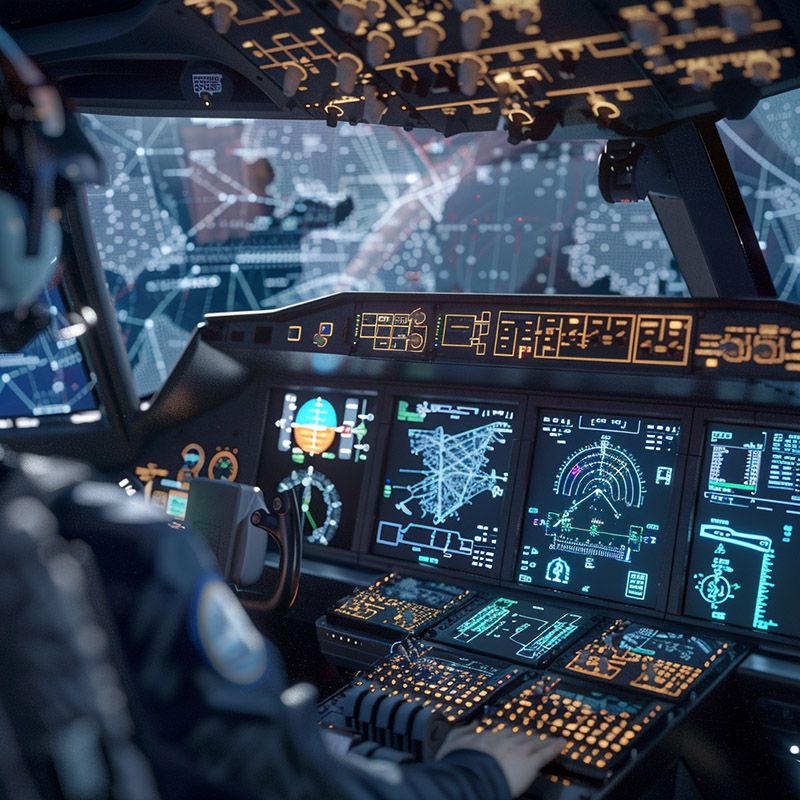
Safety Monitoring Before AI
Monitoring the safety and performance of aircraft systems relied on routine checks and the vigilance of the flight crew, which could miss early signs of potential issues.
Safety Monitoring After AI
AI continuously analyzes data from aircraft sensors to monitor safety and performance in real-time, detecting potential issues before they pose a risk. This proactive approach enhances flight safety and reliability, contributing to overall aviation safety advancements.
7. Safety Monitoring Management and Scheduling
AI optimizes crew scheduling by considering qualifications, legal requirements, and personal preferences, leading to more efficient staff utilization and increased job satisfaction.
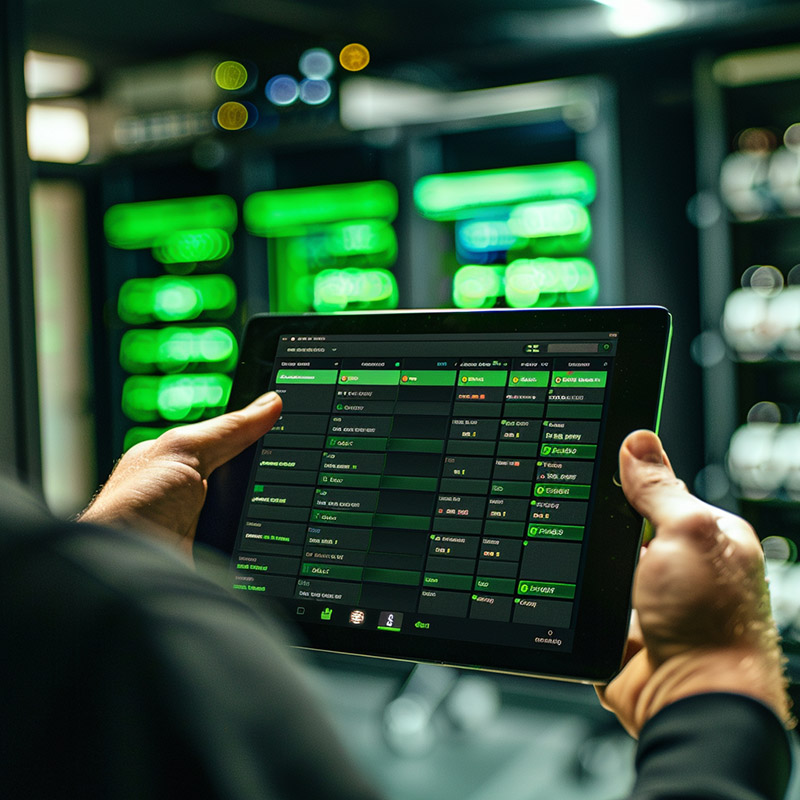
Crew Scheduling Before AI
Crew scheduling was a complex task that often resulted in inefficient use of personnel, conflicts with regulations, and issues with work-life balance for the crew.
Crew Scheduling After AI
AI optimizes crew scheduling, ensuring compliance with regulations, efficient use of personnel, and consideration of crew preferences. This leads to increased operational efficiency, cost savings, and improved job satisfaction among staff.
8. Dynamic Pricing Strategies
AI analyzes market demand, competitor pricing, and other factors to adjust ticket prices in real-time, maximizing revenue while offering competitive rates to passengers.
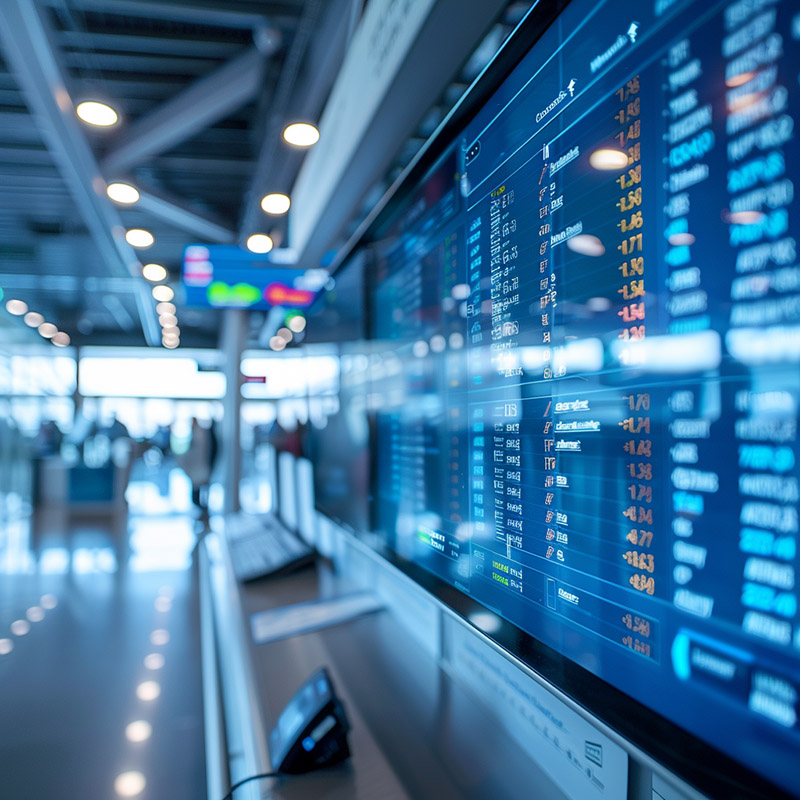
Pricing Before AI
Pricing strategies were based on basic demand forecasts and historical data, which did not always capture real-time market dynamics, leading to lost revenue opportunities or unsold seats.
Pricing After AI
AI analyzes real-time data to dynamically adjust ticket prices, maximizing revenue while remaining competitive. This approach responds quickly to market changes, improving load factors and profitability for airlines.
9. Enhanced Security Measures
AI improves airport security by analyzing surveillance footage in real-time for unusual behaviors or potential threats, ensuring a safer travel environment without slowing down the passenger flow.
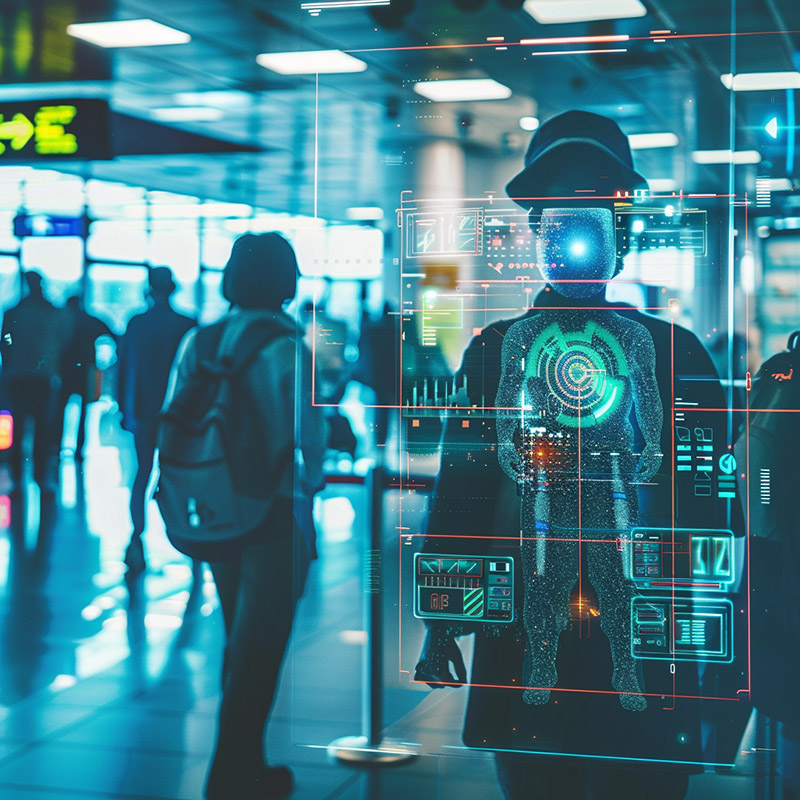
Security Before AI
Security screening relied on manual checks and basic surveillance, limiting the ability to identify and respond to potential threats efficiently, potentially compromising passenger safety.
Security After AI
AI improves security by analyzing surveillance footage in real-time for unusual behaviors or items, enhancing threat detection without impeding passenger flow. This technology supports a safer travel environment while maintaining efficiency at security checkpoints.
10. Voice-Activated Interfaces for Pilots
AI-powered voice recognition systems allow pilots to control aircraft systems and access information hands-free, reducing workload and enhancing cockpit efficiency and safety.

Control Before AI
Pilots managed aircraft systems through manual controls and visual displays, which could be distracting and contribute to workload during critical phases of flight.
Control After AI
AI-powered voice recognition allows pilots to control systems and access information hands-free, reducing cockpit workload and enhancing situational awareness. This technology streamlines operations and increases safety by allowing pilots to maintain focus on flying the aircraft.